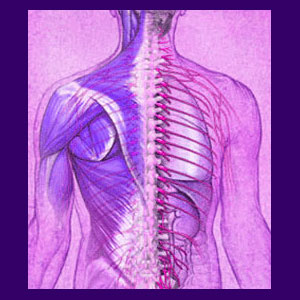
Ossification of the posterior longitudinal ligament, also known as OPLL, is a potentially serious diagnosis that is usually linked to the existence of cervical central canal stenosis. Ossification is a process that can affect many tissues in the body, including several in the spine, such as ligaments, membranes and intervertebral discs.
Ossification is a diagnostic term that describes the scenario when a soft tissue transforms into a hardened bony tissue. Therefore, ossification of the posterior longitudinal ligament exists when this vital spinal stabilizer loses its typical soft fibrous structure and is changed into skeletal bone. While not inherently pathological unto itself, some patients develop hypertrophic ossified ligaments that can impinge on the spinal canal and even damage the actual spinal cord.
This discussion focuses on the structural changes that can take place in the posterior longitudinal ligament and what these changes mean for any affected patient who is diagnosed with OPLL.
Ossification of the Posterior Longitudinal Ligament Process
Ossification sounds terrible, but it is actually quite common within the spinal anatomy. It can affect any of the spinal ligaments, including the posterior longitudinal, anterior longitudinal or ligamentum flavum, as well as other types of soft tissues, such as the intervertebral discs.
Just because the posterior ligament ossifies, does not mean that pain or neurological problems will necessarily result. Statistics demonstrate that most cases of OPLL are not symptomatic and will not become symptomatic, even as the condition progresses. However, being that the posterior longitudinal ligament resides on the frontal surface of the spinal canal, ossification can also become a potentially dire condition when the tissue becomes hypertrophic and encroaches on the central neurological canal.
The reasons why some people experience ossification of the PLL are not entirely clear. Medical science has determined that ethnicity and genetic disposition are the leading causes of the condition, while other disease processes might be the source in select cases.
OPLL Spinal Stenosis
When spinal stenosis results from OPLL, combined with typical or atypical spinal structural changes, the consequences can be devastating. Many patients endure significant stenotic change in the cervical spine as a normal part of aging. When combined with ligamentous ossification, the resulting canal narrowing can be highly symptomatic.
Patients can experience pain virtually anywhere from the neck down and are also likely to suffer neurological deficits, including numbness, weakness and paresthesia throughout regions of the body, that might change or remain static.
Many patients can not stand or walk, suffer from poor balance, endure loss of bowel or bladder control or face the ordeal of sexual dysfunction.
OPLL can occur outside of the cervical region. A minority of cases are seen in the upper thoracic region. However, very few cases of significant or symptomatic ossification affect the posterior longitudinal ligament in the lumbar levels of the vertebral column.
Ossification of the Posterior Longitudinal Ligament Guidance
Treatment for OPLL is one of the more difficult aspects of the condition. This is because therapy is always surgical and is usually highly invasive and very risky. Unlike other types of spinal stenosis surgery, procedures that target ligamentous ossification often face complications that can cause unsuccessful results in a great number of patients. These complications usually result when the ossification process bonds the spinal dura mater to the bony ligament.
Being that the dura mater is the outermost membrane that encapsulates the central canal, any surgical procedure stands a great chance of causing injury to the spinal cord, nerves and cerebral spinal fluid. CSF leaking is commonplace after these procedures and often necessitates revision surgery. Neurological trauma might cause permanent spinal cord or nerve injury. Of course, since parts of the vertebrae are also removed, spinal fusion is almost always required. This is one of the most complication-fraught operations in the world, so the patient’s problems might have just begun.
Be sure to evaluate any OPLL condition carefully with your neurologist and always get a second opinion on the diagnosis and treatment recommendations. If you do decide to proceed with surgery, always explore your procedural choices carefully, since there are many different ways to decompress the canal, using anterior and posterior techniques. No single operation is universally best for all patients, so be sure to seek specialized care from an expert in stenosis surgery.
Back Pain > Spine > Ossification of the Posterior Longitudinal Ligament





